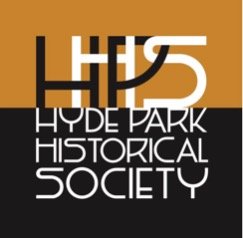Nuclear Energy Sculpture/Mansueto Library
5625 S Ellis Ave, Chicago, IL 60637
Short Intro:
The University of Chicago is famous for its entanglement in the Manhattan Project, being the site of the world’s first self-sustained nuclear chain reaction experiment which took place in what were in 1942 bleachers under Stagg Field. Today, two libraries (Regenstein and Mansueto) and the Nuclear Sculpture created by Henry Moore stand on that site commemorating this scientific achievement which ultimately led to the development of the Atomic Bomb in 1945.
Local History/Background for Teachers’ Prep:
During World War Two (1941-1945), the United States was in a rush to create the Atomic Bomb before the Germans did. In order to complete this mission, the Manhattan Project (1942-1945) was put into place. One part of creating an Atomic Bomb was ensuring whetehr a self-sustained nuclear chain reaction was possible or not. The Chicago-Pile 1 was assembled under the abandoned Stagg Field by scientists and day laborers, under the supervision of the Italian-American physicist Enrico Fermi (1901-1954). The experiment was a resounding success, proving that an artifical nuclear reaction could happen. This success was a small part of ensuring the success of the Manhattan Project. Eventually, the Atomic Bombs created by scientists in the Manhattan Project were dropped on two cities in Japan, Hiroshima and Nagasaki, killing hundreds of thousands of people from impact and the diseases that followed for years after the bombings. The people extinguished in these bombings by the U.S. government were civilians.
In 1967, Henry Moore (1898-1986) completed a Nuclear Energy Sculpture on the site of the world’s first self-sustained nuclear chain reaction. The sculpture looks like a mushroom, or a human head, the confusion being in part intentional to portray both the excitement and the fear of such a scientific achievement. Moore, famously, was against the use of nuclear science to conduct warfare, even founding the Campaign for Nuclear Disarmament in 1958. Yet, he took on this project in 1963, perhaps to show both the wonder and the anxiety that such a commemoration can imply.
This site has been contentious, with anti-nuclear and anti-war activists protesting and vandalizing the statue on the Hiroshima bombing anniversary and the Chernobyl Nuclear Disaster anniversary. It also serves as a reminder of academia’s role in warfare and the dismal effects of scientific discovery and progress.
The Stagg Field does not exist at this location anymore, instead The Joe and Rika Mansueto Library (2011) and the Regenstein Library (1970) stand on this site. The Manuseto Library has a state-of-the-art robot book retrieval system and the Regenstein is the largest library on UChicago’s campus. Both libraries are connected through a corridor and are used extensively by students for research, studying, and group projects. They are also open to the public for tours and research.
Videos (Pre-Field Trip Prep):
Mansueto Library: A 360° Tour by The University of Chicago
https://youtu.be/fV6CAJsqWLA?si=l8B_XIaN4uR2-h1S
Automated Library: How the Joe and Rika Mansueto Library Works by The University of Chicago
https://www.youtube.com/watch?v=HK7E0ang48w&ab_channel=TheUniversityofChicago
University of Chicago: 1942: UChicago’s race to the first nuclear reaction
https://www.youtube.com/watch?v=6KuiTN10Ruw&t=6s&ab_channel=TheUniversityofChicago
Questions for Discussion:
What is the purpose of a sculpture? What does this sculpture look like to you?
Would you like to study in a dome? Why or why not?
What are the implications of creating public art that commemorates something that led to the creation of an atomic bomb?
Suggested Activities:
Draw the dome!
The Joe and Rika Mansueto Library has a beautiful dome architecture (images above) that students can attempt drawing either during or after the field trip. Not only will this allow students to realize just how unique this library is, but also introduce them to new architectural techniques.
Visit the Regenstein Library!
The 7-floor main library of the University of Chicago is open to public visitors, even leading tours of the library. Plan ahead for the field trip and request a quick tour here: https://www.lib.uchicago.edu/research/teaching/tours/. Students can learn about the Special Collections Center, different resources available at the library, and get introduced to college studying environments.
Walking Tour Script:
Note: This is flexible depending on where you start/end the tour or if you choose to skip certain parts. Hence, this tour script only lists facts about certain aspects of the location that can be told in the order determined by the tour guide/teacher(s).
Nuclear Energy: bronze statue
Mansueto: glass dome
Regenstein Library: brutalist architecture
Further Resources:
WBEZ ‘Oppenheimer,’ nukes and secrets: Take a walking tour of Chicago’s atomic history
Atomic Heritage Foundation: Chicago Pile-1
https://ahf.nuclearmuseum.org/ahf/history/chicago-pile-1/
Office of Nuclear Energy: 10 Intriguing Facts About the World’s First Nuclear Chain Reaction
https://www.energy.gov/ne/articles/10-intriguing-facts-about-worlds-first-nuclear-chain-reaction
The New Yorker: Remembering the Chicago Pile, the World’s First Nuclear Reactor







